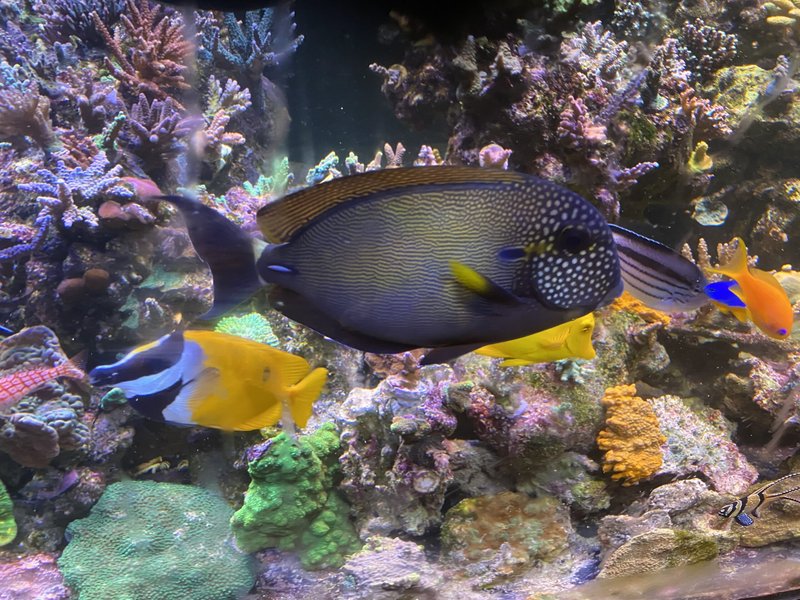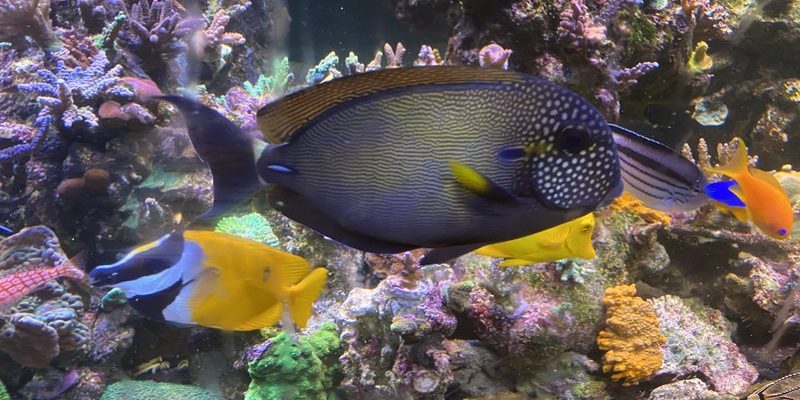
Yellow Tangs are stunning fish, sporting bright yellow bodies and distinctive, angular shapes that catch the eye. Like any new pet, they need a bit of care and attention as they adapt to their new home. Whether you’re a seasoned aquarist or just starting, understanding how to acclimate this fish can be a game-changer for your aquarium’s ecosystem. So, let’s dive in!
Understanding the Acclimation Process
Before we get into the how-to, let’s talk about why acclimation matters. Imagine moving to a new city without knowing anything about it. The hustle and bustle can be overwhelming! Your Yellow Tang feels the same way when you drop it into a new environment. Acclimation helps ease the transition, reducing stress and the likelihood of illness.
There are two main types of acclimation: drip acclimation and float acclimation. Drip acclimation is typically the more preferred method because it introduces the fish to the new water parameters gradually. This helps your Yellow Tang adjust to differences in temperature, pH, and salinity. In contrast, float acclimation is a simpler method where you let the fish float in the bag to equalize the water temperatures. Each method has its pros and cons, and understanding them can help you make the best choice for your new pet.
Preparing Your Aquarium
Before your Yellow Tang arrives, ensure your aquarium is ready. Proper preparation is key to a successful acclimation. Check water parameters like temperature, pH, and salinity. Ideally, aim for a temperature of 75-82°F, pH levels between 8.1-8.4, and a salinity of 1.020-1.025.
Also, create a peaceful environment free of aggressive tank mates. Yellow Tangs can be territorial, so it’s essential to ensure your other fish are compatible. If your aquarium is heavily populated, consider separating the Tang until it’s more accustomed to its new home.
Finally, it’s wise to establish hiding spots using rocks or plants. This way, your Yellow Tang can retreat to a safe space if it feels stressed. Think of it as setting up a cozy corner in your new home where you can unwind.
The Drip Acclimation Method
Now, let’s get into the nitty-gritty of drip acclimation, which many aquarists swear by. It sounds fancy, but it’s a pretty straightforward process. Here’s how it goes:
1. Gather Your Supplies: You’ll need a clean bucket, some airline tubing, and possibly a small valve for controlling the water flow.
2. Set the Scene: Float the sealed bag containing your Yellow Tang in your aquarium for about 15-20 minutes to equalize the temperature.
3. Drip It Like It’s Hot: Once the temperature is similar, carefully open the bag and place the fish in the bucket.
4. Start the Drip: Use the airline tubing to slowly let aquarium water into the bucket at a rate of about 2-4 drops per second. Keep this going for about 1-2 hours.
The goal here is to slowly mix the water from the bag with the aquarium water. This way, when it’s time to introduce the Tang to the aquarium, it will be less of a shock.
The Float Acclimation Method
If you’re looking for a simpler way, the float acclimation method may be for you. It’s less time-consuming but can also be effective. Here’s what to do:
1. Float the Bag: Like before, float the sealed bag in your aquarium for 15-20 minutes to let the temperatures equalize.
2. Open & Introduce: After the time is up, open the bag, and gently place your Yellow Tang into the aquarium without adding the original bag water.
3. Observe: Keep an eye on your Tang during the first few hours. It may hide at first or swim nervously, which is completely normal.
Using the float method is quick and simple, but remember that it’s not as gradual as drip acclimation. Choose the one that best fits your style and your fish’s needs.
Monitoring Your Tang After Acclimation
After you’ve introduced your Yellow Tang to the aquarium, the fun doesn’t stop. You’ll want to monitor the fish closely for signs of stress or illness. Common signs include:
– Hiding excessively: While it’s natural for a fish to seek shelter, too much hiding can indicate stress.
– Not eating: If your Tang refuses food after a few hours, that’s a red flag.
– Unusual swimming patterns: If your Tang is darting around or just hanging at the bottom, it could be a sign of distress.
You might be wondering why all this matters. Stress can weaken your Tang’s immune system, making it more susceptible to diseases. Keeping a close eye during the first week can help catch problems early.
Feeding Your New Yellow Tang
Feeding your Yellow Tang properly is essential for its health and happiness. Once it’s settled, offer a varied diet to meet its nutritional needs. Here are some feeding tips:
– Try Seaweed: Yellow Tangs love to munch on dried seaweed or nori. You can attach it to a clip in the aquarium for easy access.
– Quality Pellets and Flakes: Invest in a high-quality marine fish food. Look for options that have specific ingredients beneficial for herbivores.
– Supplement with Vegetables: Occasionally, you can offer blanched spinach or spirulina.
By providing a balanced diet, you’ll help your Tang thrive, and that vibrant yellow color will shine even brighter!
Ensuring Long-Term Health
Once your Yellow Tang is acclimated and thriving, don’t forget about its long-term care. Regular maintenance of your aquarium is crucial. This includes:
– Water Changes: Aim for weekly water changes of about 10-15% to keep the environment stable.
– Testing Water Parameters: Regularly check water quality to ensure it remains within acceptable ranges for your fish.
– Tank Mates: Be mindful of new additions. As mentioned earlier, Yellow Tangs can be territorial, so introducing new fish should be approached cautiously.
By keeping your aquarium healthy, you’re setting your Yellow Tang up for success. It’ll not only enhance its life but also the overall beauty of your aquarium.
Acclimating your new Yellow Tang to your aquarium can be as exciting as it is nerve-wracking, but with the right steps, you can make the transition smooth and stress-free. Remember, patience is key. Whether you choose drip acclimation or float acclimation, ensuring that your aquarium is prepared will create a welcoming environment for your fish.
So, take the time to care for your Yellow Tang, from its first moments in the tank to long-term health. And before you know it, you’ll have a beautiful, vibrant fish that’s a joy to watch! Happy fishkeeping!

